Lupines are beautiful wildflowers which can also be grown in the garden. With colorful spiked blooms, and fan-like foliage, lupine plants are a favorite for cottage gardens as well. Learn all about lupine plant care, to keep your lupines in tip top shape for many seasons to come.

Every spring the lupines blooms, and create so much beauty in our Nova Scotian landscape. They grow en masse with their beautiful spiked flowers, drawing attention to the drifts of color everywhere you look.
Lupine plants, known for their distinctive tall blooms that grace the landscape and gardens in late spring and early summer, are a favorite among gardeners. They are perfect plants for those looking to add both visual appeal, and a cottage garden look.
I have gathered the seed, and brought them home to grow in my own garden, where they can be enjoyed every day while in bloom.
Lupines not only look beautiful in the garden with their ethereal blooms, but also contribute to the health of the garden. The plants add to soil health by fixing nitrogen with their long taproots. They are also a magnet for bees, and attract droves of pollinators to the garden while in bloom.
Caring for lupines involves understanding their preference for cooler climates, and providing them with the growing conditions in which they will flourish. While these perennial plants (and some annuals as well) are relatively low-maintenance, providing the right care from planting to maturity will encourage a healthy display of lupine blooms, year after year.
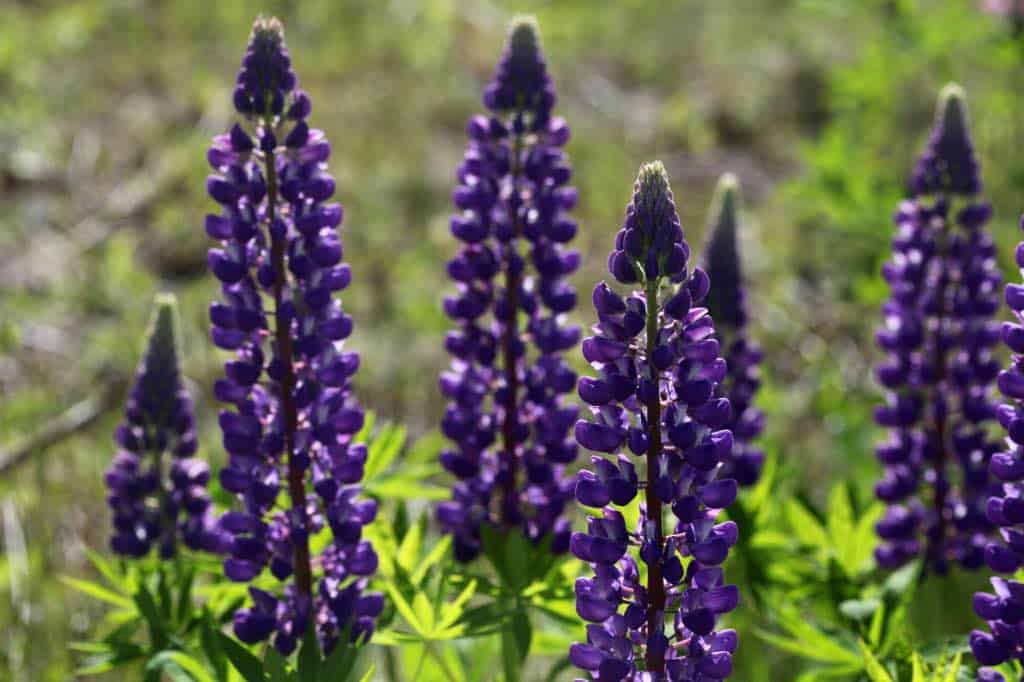
Lupine Plant Characteristics
Lupine, or Lupinus, is a genus of flowering plants that includes both annual and perennial species of lupines.
Although many lupine species are considered to be wildflowers, wild lupines can also be easily grown in the garden. There are ornamental varieties of lupines as well, which are mostly grown as garden plants.
Lupines can be tall plants, with many varieties producing blooms which are 3 to 4 feet in height at maturity.
The plants have distinctive foliage, spiked flower heads, and long taproots.
Foliage
The leaves of lupine plants are usually palmate, with leaflets radiating out from a central point, similar in appearance to fingers extending from a palm. The leaves may be hairy, and even the tiniest seedling will display the same familiar, easy to identify, lupine leaf appearance.

Flowers
Lupine flowers are quite striking due to their dense upright flower spikes. These spiky blooms are called racemes, and are covered with pea shaped blossoms. They are generally found in a range of colors, including shades of pink, purple, and cream.

Taproots
The roots of lupines are important for their survival, and allow the plants to grow in some challenging environments, such as gravelly areas, where other plants may not survive.
Lupines have a taproot system which is key to their growth and survival, especially when growing in less fertile soils. The taproot extends deep into the soil, with other smaller roots branching off to the sides. The roots allow the plant to access nutrients from deep within the soil.
Nitrogen Fixers
Lupines are considered to be nitrogen fixers. The plants belong to the legume family (Fabaceae), which is known for it's ability to fix atmospheric nitrogen. (source)
This process occurs as a result of a symbiotic relationship with certain bacteria species which colonize the roots of the plants. The bacteria convert atmospheric nitrogen into a form that the plants can use.
This enriches the soil around the plants with nitrogen, and is not only beneficial for the lupines, but also for plants grown in the same area as well.
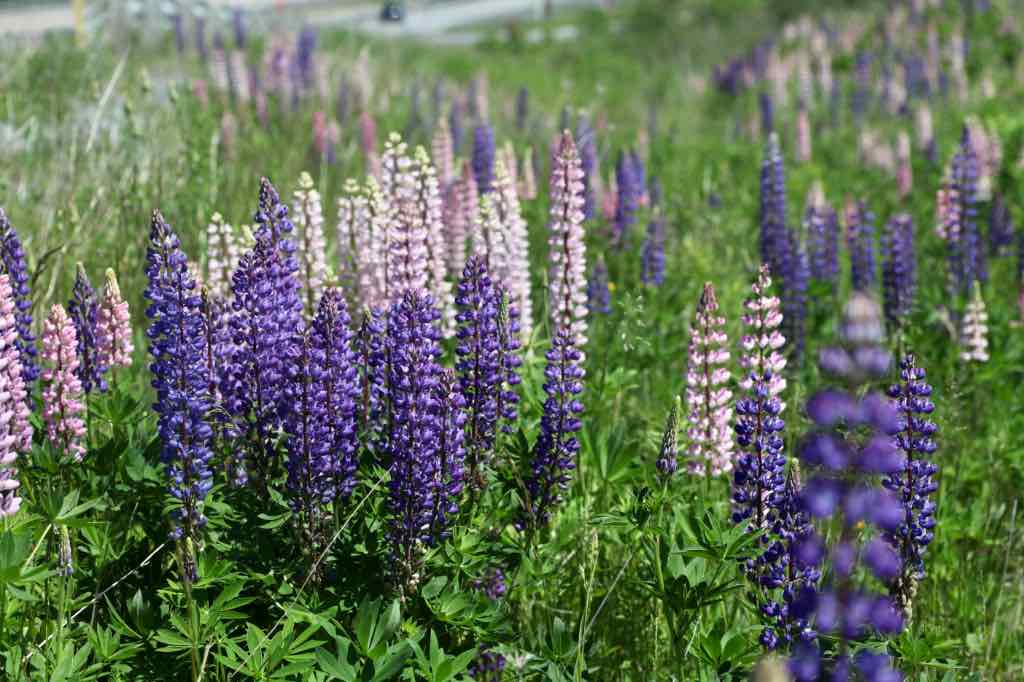
Lupine Plant Care
Whether you're a seasoned gardener, or new to planting these cottage garden favourites, a few basic guidelines for care can help you to cultivate a thriving lupine garden.
Regular maintenance, including proper planting and care, is key to vibrant lupine blooms, and keeping your lupine plants healthy and thriving. Let's have a look at some important considerations for properly caring for lupines in the garden space.
Growing Conditions
Growing Zone
Lupines generally do very well when grown in USDA plant hardiness zones 4 to 8. The plants can tolerate light frosts in early spring as the foliage emerges from the ground.
These hardy perennials grow well in the cooler weather of spring, and generally have finished blooming and started seed production by the time the heat of the summer rolls around. The plants tend to not do as well in hot climates, due to their preference for cooler temperatures.

Light Requirements
Lupines grow best in a full sun location, with best flowering results. Aim for at least 6 hours of direct sunlight daily, minimum.
The plants will also grow in partial shade as well, however there can be a reduction in blooming in light shade locations, and a tendency to have more risk for powdery mildew in these areas as well.
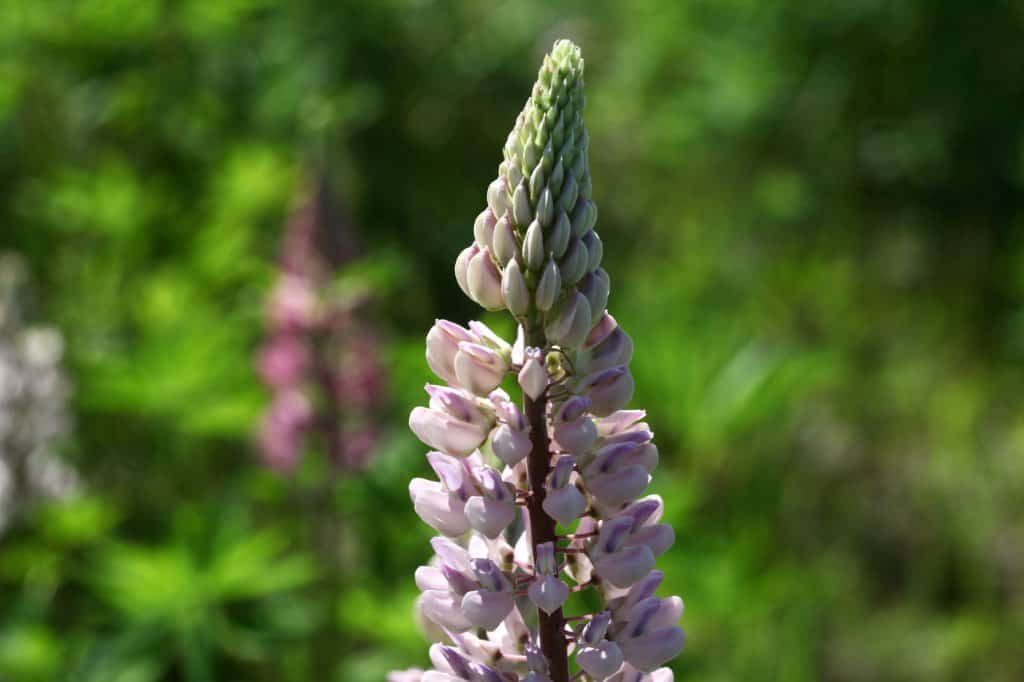
Soil Requirements
Lupines prefer well-drained, slightly acidic soil to neutral soil conditions. The ideal ph range for lupines is between 6.0 to 7.0.
Lupines thrive in sandy soils, however can also do well in loamy soils as long as there is good drainage. Heavy waterlogged clay soils are not good for lupines, as the poor drainage can lead to root rot and other growth problems.
If your garden soil is not naturally well-draining, or if it is too alkaline, you can amend it with organic matter such as compost or peat moss to improve drainage and adjust the ph level. This helps to create an environment where lupines are healthy and happy, and can grow to their full flowering potential.
Lupines are also known to thrive in poor gravel-filled roadside soils as well. You will often see drifts of colorful wild lupine plants growing happily along roadways and highway medians, in what would normally be considered shallow nutrient-poor soil.
The ability of lupines to thrive in such environments is due in part to their ability to fix nitrogen. Additionally, because they have a deep root system and long tap roots, lupine plants are able to access nutrients from deep within the soil for growth.
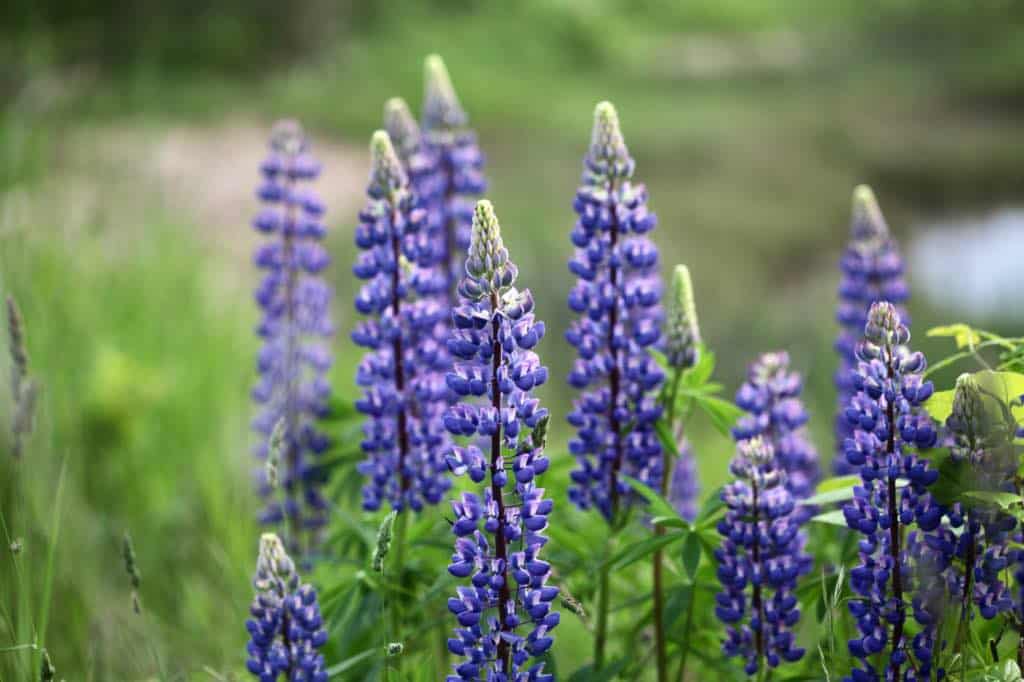
Moisture Requirements
Lupines prefer a moist soil, so keep the soil moist but not waterlogged, especially when young plants are first establishing in the garden.
Once established, the mature plants are low-maintenance for their watering needs, and are considered to be drought resistant. The lupines do benefit from watering during periods of low moisture however, so consider watering the plants during periods of drought.
Maintenance And Care
Although considered to be a low-maintenance plant, there are certain plant care strategies which are beneficial for lupine plants in the garden. Tending to your lupine plants, especially after blooming, can help to tidy up the garden, and also help to conserve the plant's energy for future growth.
Deadheading Spent Flowers
After blooming, the lupines which have been pollinated will develop seed pods full of seeds.
Unless you are planning to harvest the seeds, or plan to allow the plants to spread and naturalize in the garden, deadheading spent flowers will prevent seed development.
This in turn will help to conserve the plant's energy away from seed formation. Deadheading helps to redirect the energy back into the plant for root and foliage development, which in turn strengthens it for next season.
As well, cutting back lupine flower stalks after blooming not only tidies the plant, but can also stimulate a second flush of flowers in some species, in late summer. Make sure however not to cut too deeply, down into the crown of the plant, as this can harm the lupine.
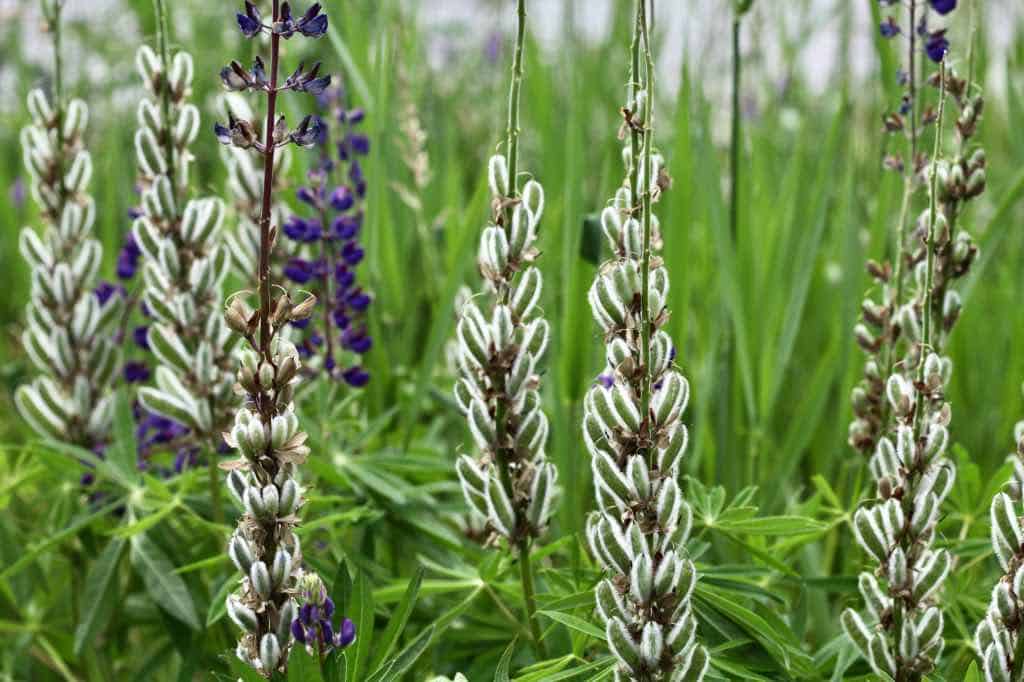

Pruning and Trimming
Pruning and trimming off old yellowed foliage will help to keep the plants healthy, and improve their appearance in the garden. This will also help to provide good air circulation around the plant, which can help to prevent powdery mildew.
Remove any leaves which show evidence of disease.
Pests And Diseases
Stay vigilant for signs of pests and disease.
Lupines are prone to pests such as aphid infestations and slugs, which are easily treated with natural predators, or insecticidal soap. Slugs can be handpicked from the plants, and slug bait is also effective.
Powdery mildew, a fungal disease, and crown rot can also be problems, so ensure good air flow around the plants, especially in humid locations, and provide for good drainage in the planting location.

Mulching
Lupines benefit from mulching. Mulching helps to maintain soil moisture, which is important for these plants, especially during dry periods.
The mulch also helps to regulate soil temperature, keeping the roots cooler in summer, and protected in winter.
Mulching helps to suppress weed growth, which is beneficial for the lupine plants.
When applying mulch, be sure to pull it a few inches away from the stems of the plant, to prevent rot.
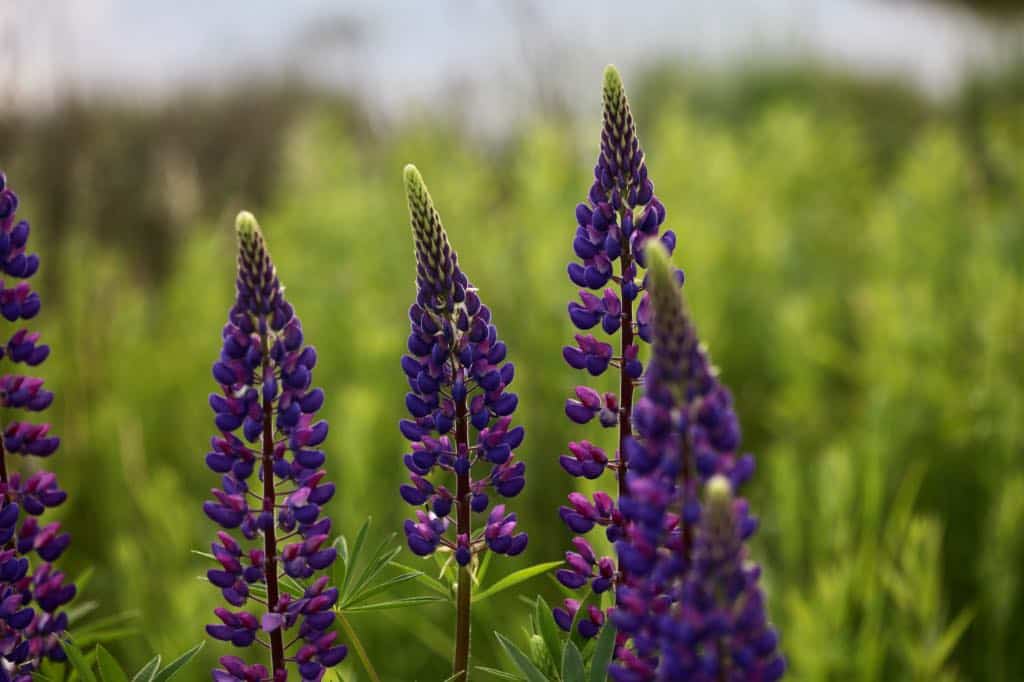
Winterizing Lupines
Winterizing lupines helps to prepare them to survive the cold winter months, especially in areas with harsh winter weather. These strategies can help your plants enter dormancy in a healthy state, increasing their chances of vigorous growth in spring.
Here are a few key steps to winterize your lupines:
- Reduce Watering: As the growing season ends and temperatures begin to drop, gradually reduce watering. The lupines will begin to become dormant, and prefer drier conditions in dormancy.
- Pruning: Consider pruning the plants back after the first frost, to remove foliage to about 3 to 4 inches above the ground. This can help prevent disease and pest infestation over winter. Otherwise you can just allow the plant to naturally die back into the garden, once they become dormant.
- Mulching: Adding a thick layer of organic mulch around the base of the plants, such as straw or leaves, helps to insulate the plants against extreme cold and temperature fluctuations in winter. Remember not to pile the mulch directly against the stems, to avoid rot.
- Snow Cover: If you live in a climate with lots of snow cover you have an advantage. Allow the snow to cover the plants, and provide extra protection from the cold temperatures of winter.

Frequently Asked Questions
How Long Do Lupines Last?
Many lupines are perennial, and therefore will last for at least two seasons or longer. Some perennial lupines can be tender however, and are considered short-lived perennials, lasting only a few seasons.
Annual lupine varieties on the other hand will complete their life cycle in just one season, and go from seed, to bloom, to seed production within the same year. The plant will then die, and will not return to the garden again, so be sure to save some seeds for planting out next season.

Should I Remove Seed Pods From Lupines?
If you don't plan to collect lupine seeds, there are definite benefits to removing the seed pods.
Lupine plants have a tendency to produce lots of seed pods containing seeds.
The plants can become somewhat unsightly, especially when the seed pods open up on the plant at the end of the season. Removing the seed pods therefore will help to tidy up the garden.
More importantly however is the fact that removing the seed pods will also help the plant to conserve the energy that it would have used for seed production, and direct it back to the plant for growth.
Lupine plants have a tendency to escape from the garden, due to their nature of seed dispersal. When lupine seed pods are mature, they will open and fling their seeds a distance away from the parent plant.
This increases the tendency of the plant to spread.
Removing seed pods therefore can also help to prevent spread of the plants, through self seeding.
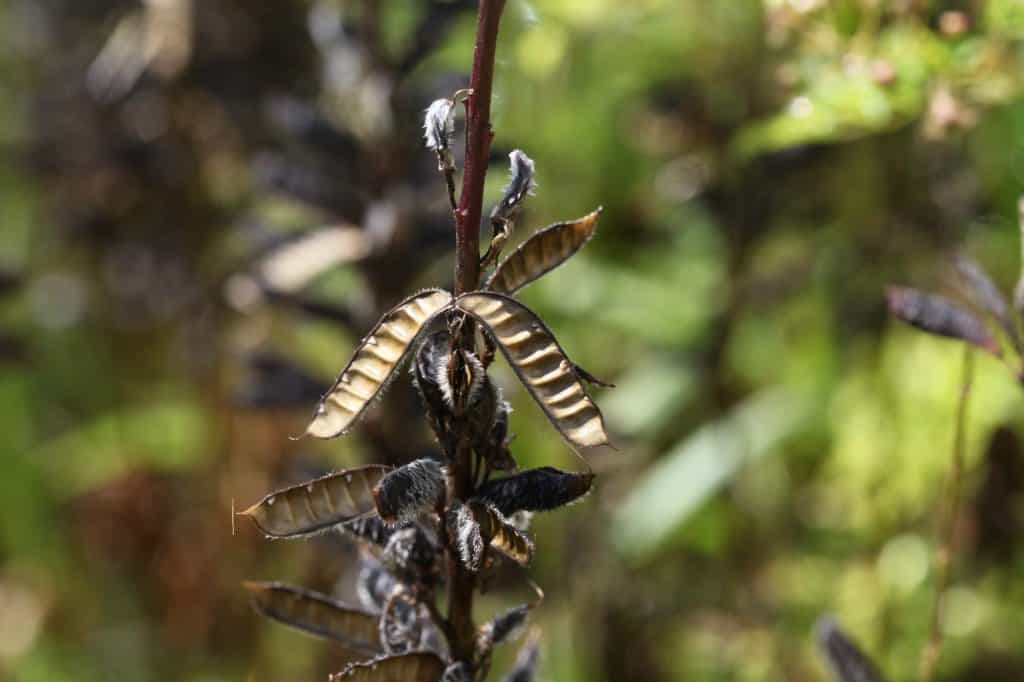
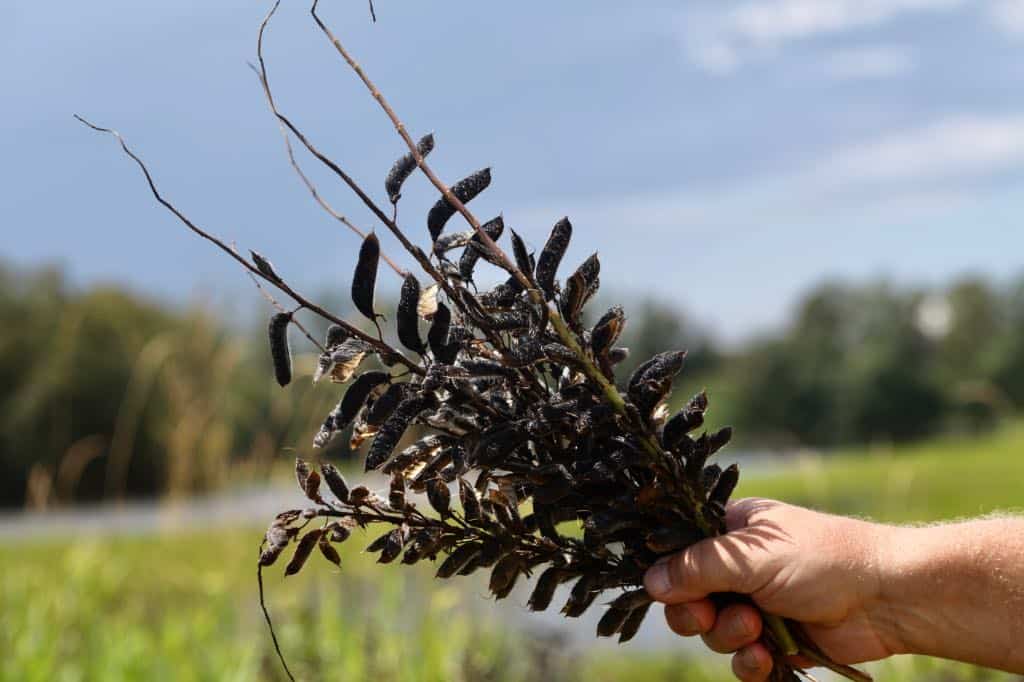
Why Are My Lupines Not Thriving?
There are many causes for lupines not to thrive in the garden.
Consider the growing conditions which are required for optimal growth. Explore any potential problems that might be occurring, and then address these issues with the appropriate lupine plant care.
- For example, lupines prefer not to have wet feet. Are they planted in a waterlogged location?
- Lupines do best in s full sun location, and may not thrive in a shady spot, with less blooming.
- Are the plants experiencing a pest infestation, or a disease such as powdery mildew, or worse yet, crown rot?
- Are the plants producing lots of seeds every season? Remember, seed production takes a lot of energy away from the plant. This in turn may lead to a less robust plant with reduction in growth.
- Also lupines are perennials, however they can be short lived. Perhaps the plant's decline is related to the age of the plant itself.
- Lupines prefer a cool climate. If grown in a warm location, the plant may not do as well, and may not thrive.

Do Lupines Make Good Companion Plants?
Lupines can make good companion plants in the garden, due to a number of beneficial qualities. However it's important to know that they can also have allelopathic tendencies, which can affect the choice of what to plant nearby.
Some lupines can be allelopathic, meaning that they release chemicals that inhibit the growth of other plants. So keep this in mind when planting near your lupines.
On the other hand, lupines are nitrogen fixers, and have a deep taproot system which helps to break up compacted soil and improve soil health, which is beneficial for other plants.
Lupines also attract lots of pollinators to the garden, including bees and butterflies, which can help with the pollination of other plants in the garden.

Conclusion
Although lupines are generally considered to be low-maintenance plants, providing some simple lupine plant care throughout the growing season can add to the health and beauty of your plants.
With flourishing lupine plants, there will also be benefits for the rest of the garden, such as soil heath through nitrogen fixation, and loads of visiting pollinators.
By understanding the basic needs of your lupine plants, and providing just a little extra care throughout the seasons, you will be rewarded with stunning lupine blooms and a thriving garden, year after year.

Do you provide any special type of lupine plant care to the lupines in your garden, helping them to grow and thrive? Be sure to leave a comment below to share your experience!
Other Posts You May Like:
PIN IT FOR LATER!
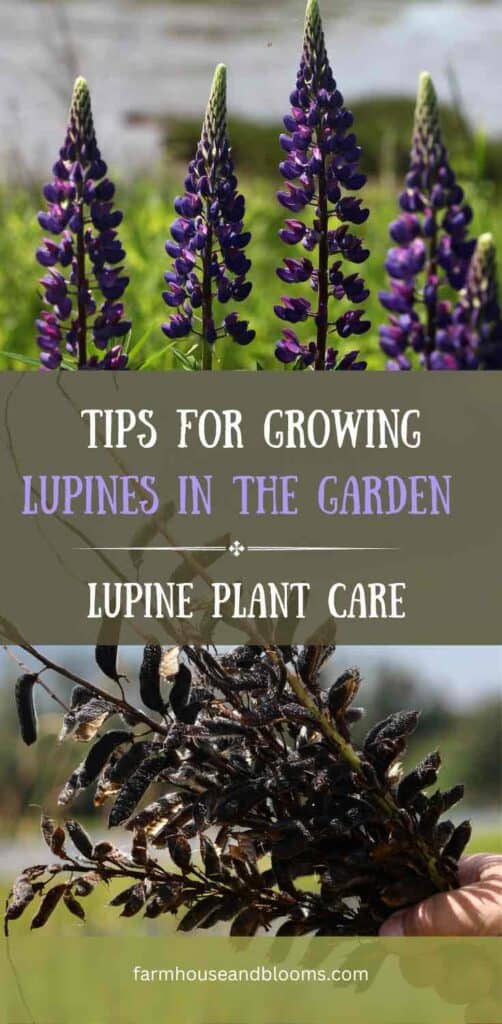
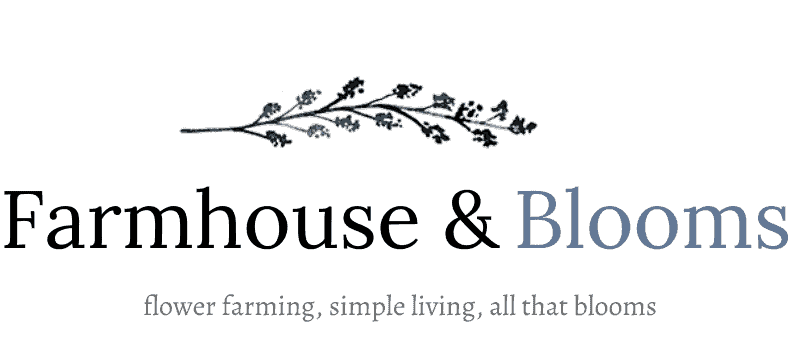





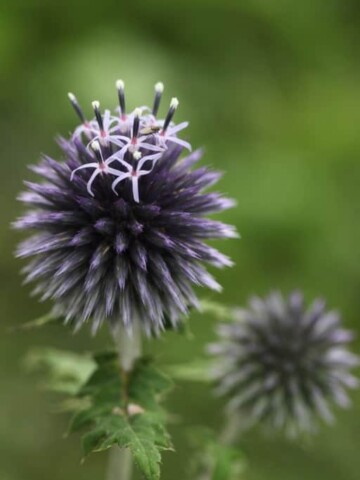
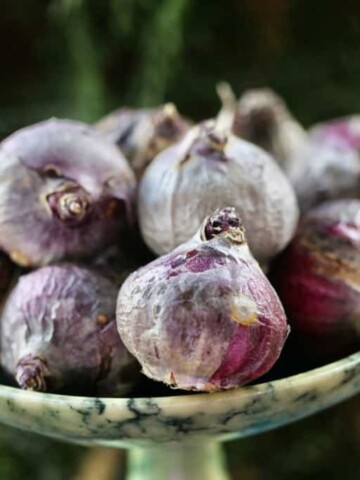
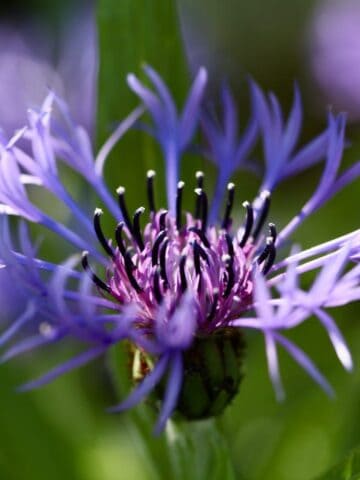
Leave a Reply